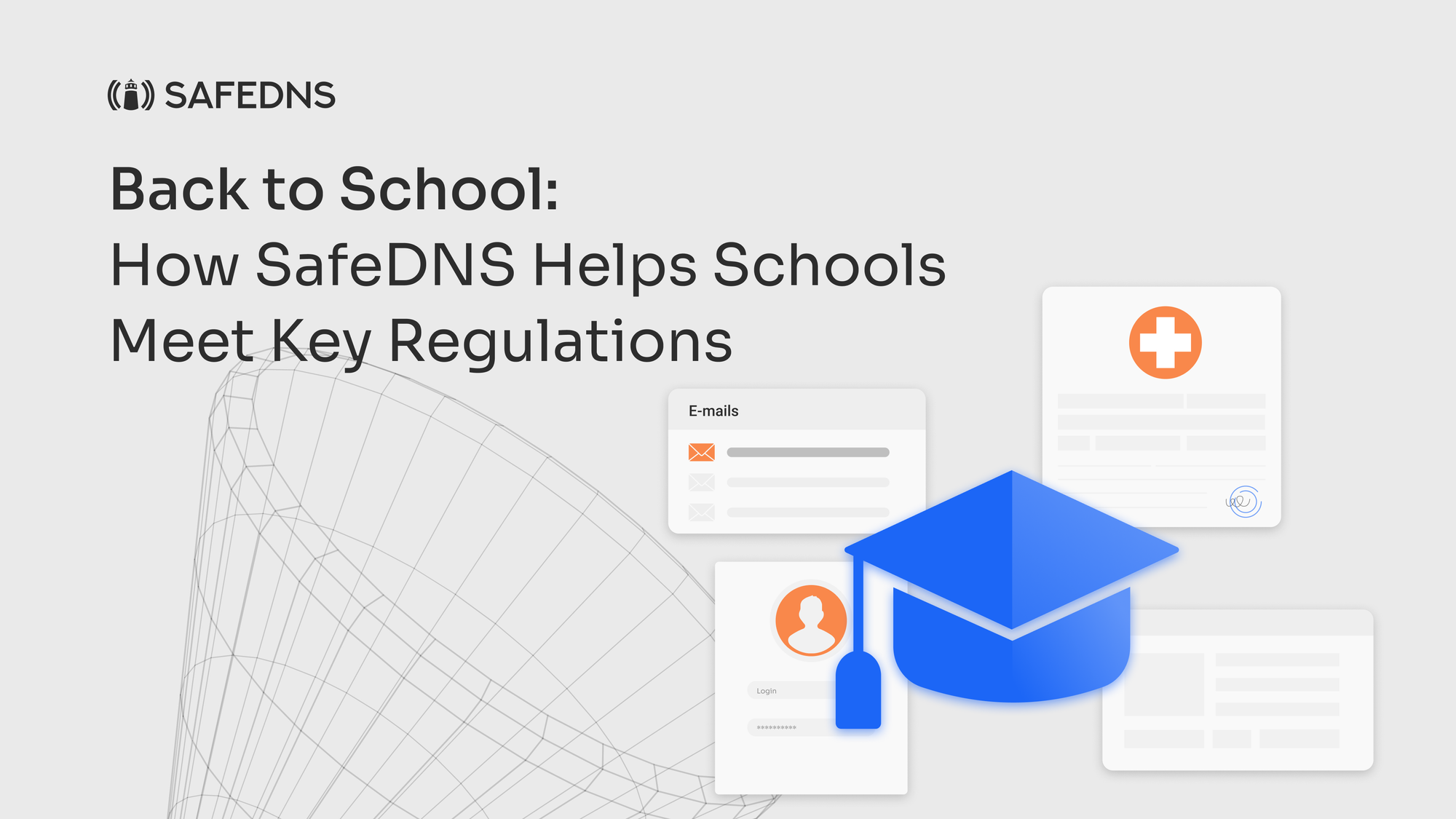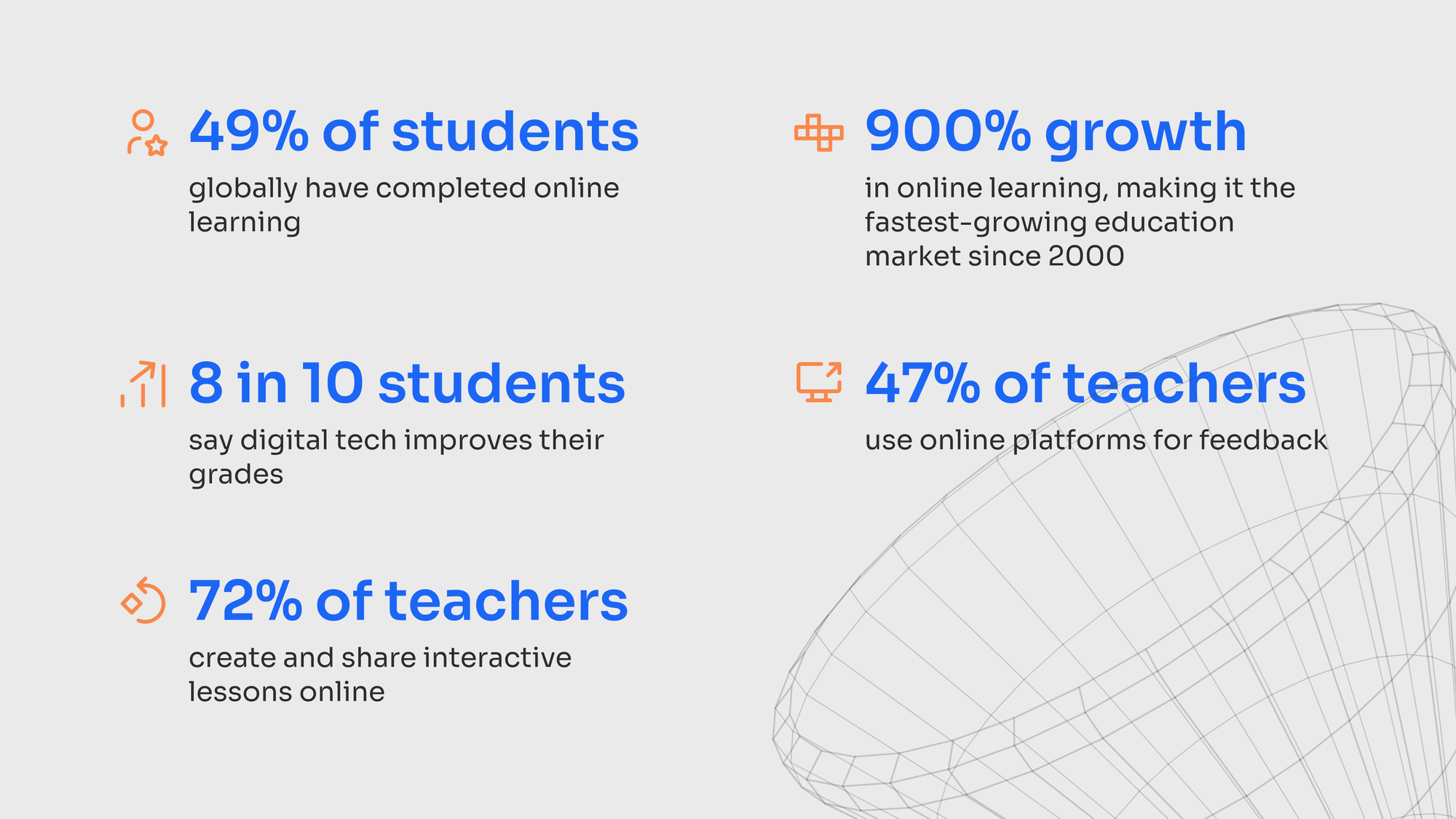
Back to School: How SafeDNS Helps Schools Meet Key Regulations
As summer draws to a close, students, parents, and educators across the world are preparing for the annual ritual of going back to school. It is that exceptionally busy season of the year when school supplies are being bought, schedules are being organized, and syncing with new routines is being established. However, in recent years, the back-to-school season has also sparked growing concerns in the cybersecurity landscape. With the increasing integration of technology into classrooms, the vulnerabilities and challenges in protecting sensitive data have become alarmingly pronounced.
The American education system is undergoing a rapid digital transformation, with technology becoming the cornerstone of how students learn and teachers instruct. From online learning platforms and digital grading systems to a vast array of educational technology (ed-tech) products, this integration has proven to be a double-edged sword. While it enhances the learning experience, it also exposes schools to significant cybersecurity risks. The COVID-19 pandemic accelerated this shift, forcing schools to adopt remote learning almost overnight. This swift transition highlighted both the potential and the pitfalls of digital education, particularly concerning the cybersecurity infrastructure of educational institutions.
Here are some key data points you should know:

One of the primary concerns is the protection of student data. Schools collect and store a vast amount of sensitive information, including names, addresses, Social Security numbers, and academic records. This data is often inadequately protected, making it a prime target for cybercriminals. In 2023 alone, several high-profile data breaches occurred within school districts across the country, exposing the personal information of thousands of students and staff.
Another critical issue is the security of online learning platforms. With the rise of remote and hybrid learning, schools have increasingly relied on various digital tools to facilitate education. However, not all these platforms are designed with cybersecurity in mind. Some have been found to have weak encryption, poor access controls, and vulnerabilities that can be exploited by hackers. The consequences of such breaches can be devastating, leading to unauthorized access to sensitive information and disruptions to the learning process.
Phishing attacks have also become increasingly rampant in the education sector. Cybercriminals often target schools with emails that appear to be from trusted sources, such as administrators or educational service providers. These phishing emails can deceive staff into revealing login credentials or downloading malware, which can then compromise the entire school network. The situation is exacerbated by the fact that many educators and administrators lack adequate training in cybersecurity best practices, leaving schools vulnerable to these types of attacks.
Given the rising threats, the importance of cybersecurity in schools cannot be overstated. Securing digital spaces where students and teachers work, connect, and learn is essential to protect personal data and ensure that the educational process remains smooth and uninterrupted. Without proper cybersecurity measures, schools risk losing the trust of students, parents, and staff, which can have far-reaching consequences for the entire education system.
A comprehensive understanding of the regulations and compliance requirements in place is crucial for enhancing cybersecurity in schools across the United States. Key laws such as the Family Educational Rights and Privacy Act (FERPA), the Children's Online Privacy Protection Act (COPPA), and the Children's Internet Protection Act (CIPA) are designed to safeguard student data and ensure that schools adhere to best cybersecurity practices. However, the challenge lies in the consistent application of these rules and ensuring that schools have the resources needed to maintain compliance.
Essential Laws for Protecting Student Data Online:
Family Educational Rights and Privacy Act (FERPA): FERPA is a federal law that protects the privacy of student education records. It gives parents and eligible students the right to access and control these records. Schools must handle student information securely and ensure it is not disclosed without proper authorization. Non-compliance with FERPA can result in the loss of federal funding and other penalties.
Children's Online Privacy Protection Act (COPPA): COPPA focuses on protecting the online privacy of children under the age of 13. It requires websites and online services directed at children to obtain parental consent before collecting personal information. This law is crucial in safeguarding children’s data, particularly as more young students engage with online learning platforms.
Children's Internet Protection Act (CIPA): CIPA mandates that schools and libraries receiving federal funding for internet access implement measures to protect students from harmful online content. Compliance with CIPA involves the use of internet filters, monitoring the online activities of minors, and educating students about appropriate online behavior.
By using SafeDNS, schools can protect student data, promote safe internet browsing, and stay aligned with crucial cybersecurity regulations. Plus, SafeDNS goes above and beyond by meeting top international standards. We're talking about the Internet Watch Foundation (IWF), the Federal Office for Information Security (BpjM), and the Canadian Centre for Child Protection’s Project Arachnid. SafeDNS isn’t just about compliance—it’s about setting the gold standard for online safety in education.
Others are the support that SafeDNS gives for compliance with the UK data protection standards and the general data protection law of Canada. Even though the UK has already exited from the European Union, the practices of the law GDPR continue to guard the expectations as stipulated in it, mandating learning institutions to be transparent in the handling of student data, accessing it only after allowance when needed.SafeDNS also answers keeping in line with Keeping Children Safe in Education (KCSIE) in the United Kingdom, which ensures that schools maintain proper standards in safeguarding students on the internet. This, thus, makes SafeDNS a one-stop solution for schools to maintain a safe online environment while still being compliant with all data protection regulations, both local and international.
As technology continues to reshape the educational landscape, protecting sensitive student data has never been more critical. Adhering to key regulations like FERPA, COPPA, and CIPA is essential, but ensuring consistent compliance can be challenging without the right tools. SafeDNS provides a robust solution, helping schools meet these regulatory requirements and beyond, ensuring a secure and smooth learning experience for everyone involved. By adopting SafeDNS, schools can safeguard students' privacy, maintain trust, and keep the educational process safe and uninterrupted.
Take advantage of the SafeDNS trial period and try all the best features

